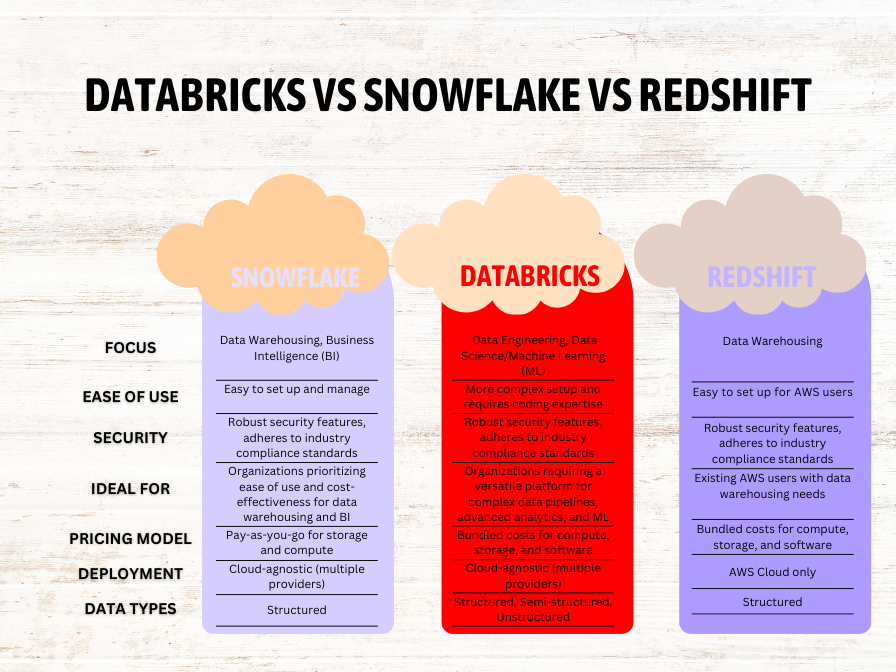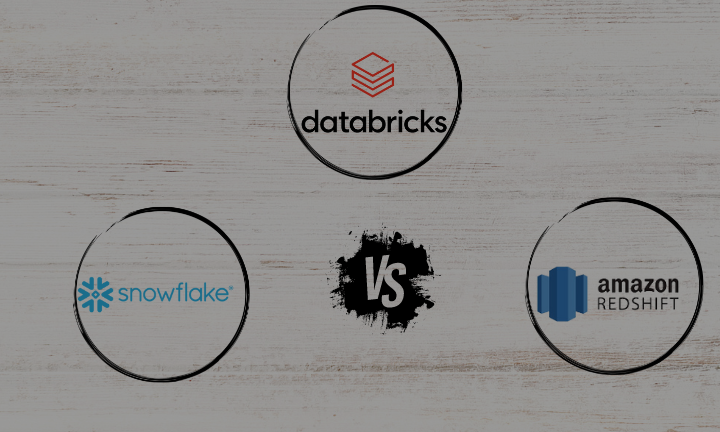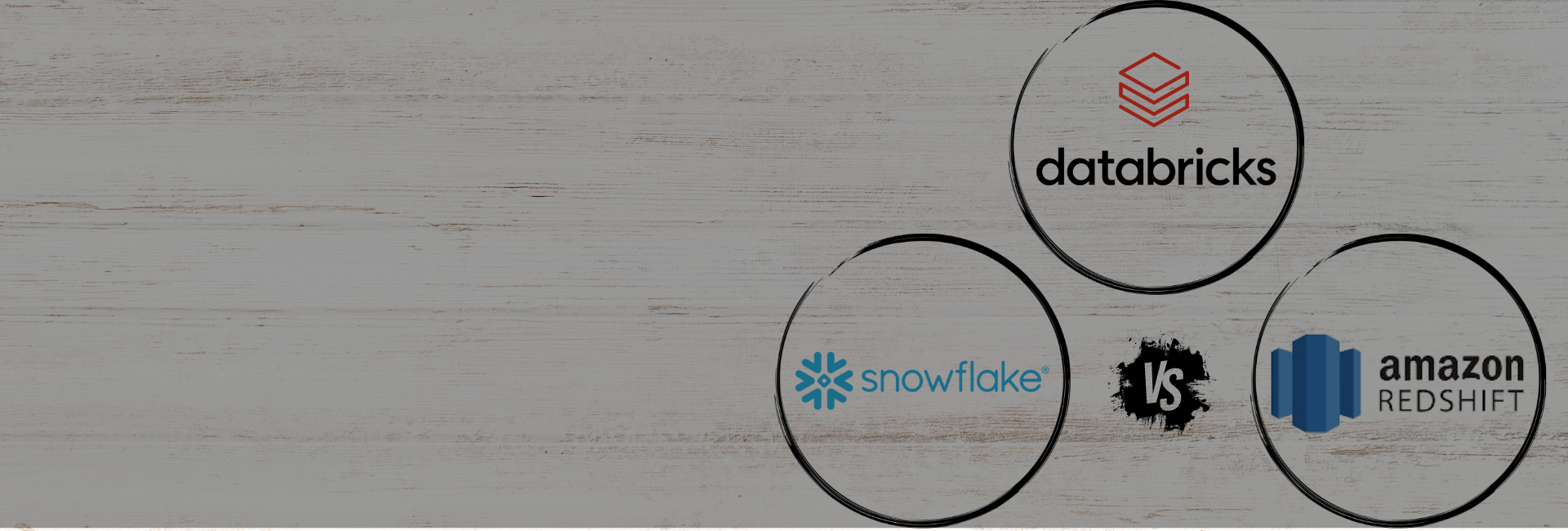In the age of big data, organizations are increasingly reliant on robust data storage and processing solutions to manage and analyze vast amounts of information. Choosing the right data intelligence platform can significantly impact performance, scalability, and overall business efficiency. Three of the most prominent players in this space are Snowflake, Databricks, and Redshift. Each platform offers unique features and capabilities tailored to specific data needs and use cases.
Snowflake is renowned for its data warehousing capabilities, providing a highly scalable and efficient environment for SQL-based analytics. Databricks, built on Apache Spark, excels in big data processing and advanced analytics, making it a go-to choice for data science and machine learning workflows. Redshift, Amazon Web Services’ data warehouse solution, integrates seamlessly with the AWS ecosystem, offering powerful SQL-based data warehousing.
Interesting Stories of Emergence: DataBricks vs Snowflake Vs RedShift
Databricks
Founding and Early Days:
Databricks was founded in 2013 by the creators of Apache Spark, including Ali Ghodsi, Matei Zaharia, Ion Stoica, and others, at UC Berkeley’s AMPLab. Apache Spark is an open-source unified analytics engine for large-scale data processing, known for its speed and ease of use compared to Hadoop.
Key Innovations:
- Databricks aims to unify data engineering, data science, and machine learning on a single platform. It integrates with popular data sources and provides collaborative notebooks, making it easier for teams to work together on big data projects.
- In 2019, Databricks introduced Delta Lake, an open-source storage layer that brings ACID transactions to big data workloads. This innovation helped address issues of data reliability and consistency in big data environments.
Funding and Valuation:
Databricks has raised substantial funding from investors, including Andreessen Horowitz, Battery Ventures, and Microsoft. As of 2021, Databricks reached a valuation of $28 billion.
Partnerships:
Databricks has formed key partnerships with major cloud providers (Azure Databricks, AWS, Google Cloud) to offer its platform as a managed service, making it easier for organizations to adopt and scale their data analytics operations.
SnowFlake
Founding and Early Days:
Snowflake was founded in 2012 by Benoit Dageville, Thierry Cruanes, and Marcin Zukowski. Dageville and Cruanes were former Oracle engineers, while Zukowski had co-founded the startup Vectorwise. They aimed to build a cloud-based data warehousing solution that would overcome the limitations of traditional databases and data warehousing solutions.
Key Innovations:
Cloud-Native Architecture: Snowflake was designed from the ground up to leverage cloud infrastructure, separating storage and compute, allowing for elasticity and scalability. This design enabled users to scale their storage and compute resources independently.
Funding and IPO:
Snowflake received significant venture capital investments, including from firms like Sutter Hill Ventures, Altimeter Capital, and ICONIQ Capital. In September 2020, Snowflake went public in one of the largest software IPOs in history, raising $3.4 billion and reaching a market capitalization of $70 billion.
Partnerships:
Snowflake formed strategic partnerships with major cloud providers like AWS, Azure, and Google Cloud, ensuring broad compatibility and integration with other cloud services.
Amazon Redshift
Origins and Development:
Amazon Redshift is a data warehousing service that was officially launched by Amazon Web Services (AWS) in February 2013. Its creation was driven by the need to provide a scalable, cost-effective solution for managing large-scale data analytics. The service is based on PostgreSQL, but it has been highly modified and optimized for data warehousing and analytics.
Company Valuation:
Amazon Redshift is a product of Amazon Web Services (AWS), a subsidiary of Amazon.com, Inc. As part of AWS, Redshift doesn’t have an independent valuation, but its success contributes significantly to AWS’s overall value. AWS is a major contributor to Amazon’s revenue. As of the latest reports, AWS’s revenue reached $80.1 billion in 2022, showcasing its critical role in Amazon’s business model.
Partnerships:
Amazon Redshift has established numerous partnerships to enhance its ecosystem, integrating with various technologies and platforms (Talend, Informatica,Tableau, Looker) to provide a comprehensive data warehousing solution.

Key Comparison between Databricks vs Snowflake vs Redshift
Focus and Data Types:
- Snowflake: Best for data warehousing and business intelligence (BI) with structured data. Easy to use and scales well.
- Databricks: Versatile platform for data warehousing, engineering, data science, and machine learning. Handles structured, semi-structured, and unstructured data. More complex setup.
- Redshift: Cost-effective option for data warehousing, especially for existing AWS users, and handles structured data. Limited capabilities for advanced analytics.
Ease of Use and Scalability:
- Snowflake: User-friendly interface with independent scaling of storage and compute. Easy to set up and manage.
- Databricks: Requires more technical expertise and product development skills. Highly scalable storage and compute.
- Redshift: Easy to set up for AWS users. Scalable storage but limited compute scaling.
Pricing:
- Snowflake: Pay-as-you-go model for storage and computing, making it cost-effective for variable workloads.
- Databricks: Bundled costs for compute, storage, and software can be less transparent.
- Redshift: Cost-effective for AWS users, but pay-per-hour for computers.
Advanced Analytics and Machine Learning:
- Snowflake: Limited built-in capabilities, requires integration with other tools.
- Databricks: Strong built-in capabilities for advanced analytics and machine learning.
- Redshift: Limited built-in capabilities for advanced analytics and machine learning.
How can you choose between Snowflake, Redshift and Databricks?
Here’s a quick decision tree to help you choose:
- Do you prioritize ease of use and cost-effectiveness for data warehousing and BI?
Choose Snowflake.
- Do you need a versatile platform for complex data pipelines, advanced analytics, and ML?
Choose Databricks (if you have the technical expertise).
- Are you an existing AWS user with primarily data warehousing needs?
Choose Redshift (if advanced analytics aren’t a priority).


